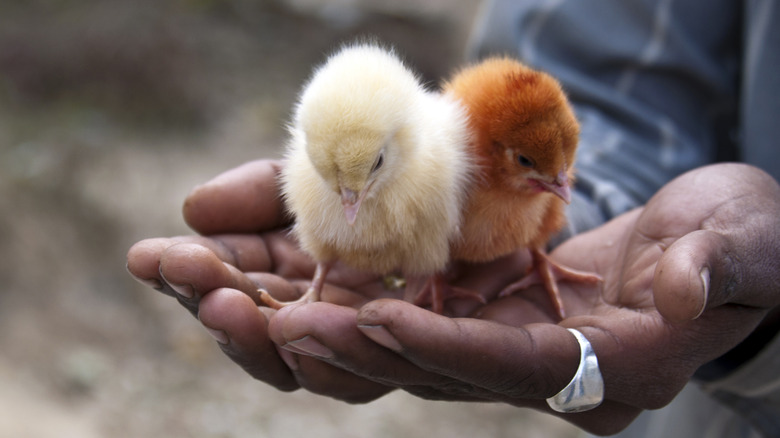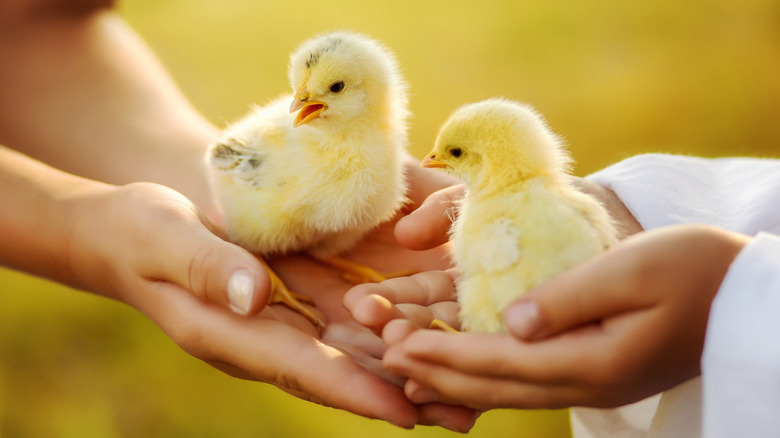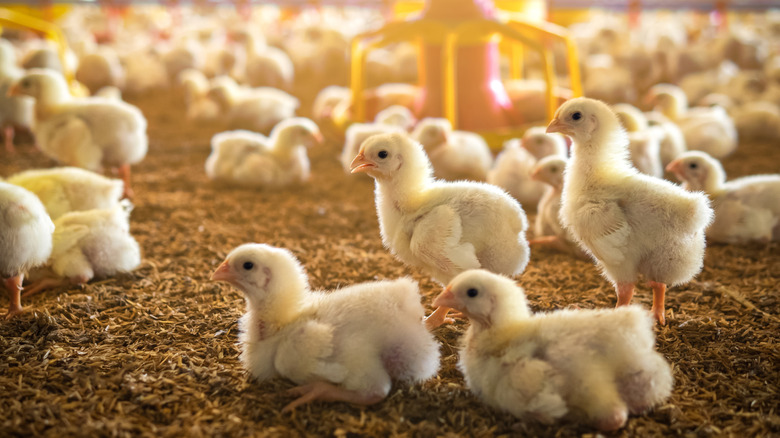How To Tell The Difference Between Male & Female Baby Chicks
Raising chickens can be extremely rewarding and fun, but there's a lot to take into consideration, especially if you're hatching baby chicks on your own. When your little fuzz balls arrive, you'll probably want to know how many male and female chicks you have. If you hope to one day to have birds that lay eggs, you must have female chicks. On the other hand, you may not want a male chick as it may grow into a rooster, which some towns do not allow due to noise level. A more serious chicken owner who is getting into breeding or showing chickens will also need to know the sex of their chicks.
But when they're tiny and fluffy, baby chicks tend the to look the same. In fact, you can't reliably tell male and female chicks apart until they're about 6 weeks old. Because of this, it can be can be extremely hard to figure out what the sex is without professional assistance, and even then, mistakes are still possible.
There are two methods of determining a chick's sex when they're a day or two old — vent sexing and feather sexing. Vent sexing involves visually identifying a chick's sexual organs, while feather sexing involves observing differences in the chicks' tiny feathers as soon as they hatch. However, there are challenges with both of these methods that usually make them too difficult for the average pet chicken owner to attempt. Moreover, in the case of vent sexing, the process can be considered risky to the chick's health if not done correctly. But, if you're still determined to figure out your chicks' sex own your own, there are a few key physical and behavioral differences to look out for.
Physical differences between male and female chicks
Around six-to-eight weeks after hatching, physical differences between male and female chicks start to become noticeable. At this point, it usually becomes evident that male chicks are the larger ones, as they tend to have bigger wattles. The feathers on baby male chicks' necks are also usually more angular, while female baby chicks have rounded neck feathers. Male chicks may also stand up taller, puff out their chests, and have thicker legs and feet than their female counterparts.
Depending on the breed, there may be differences in the chicks' feather color, too. Male Blacktail chicks, for instance, are a pale yellow color, while the females are a golden shade. Meanwhile, in Rhode Island Red and White chicks, stripes, spots, or patches sometimes differ between the sexes. Before making this kind of assessment, you'll want to first identify your baby chicks based on their coloring to determine what breed they are.
Behavioral differences between male and female chicks
Ever heard the expression "boys will be boys"? Apparently, it applies to chickens too. At 12-weeks-old, male chicks are more likely to exhibit dominant behavior, such as crowing rather than chirping. Females, meanwhile, may appear more nervous and skittish. You can test a chick's response by picking it up or clapping your hands while walking toward them. A male chick's reaction will tend to be more confrontational, and involve them they chirping at you ands sticking their feet toward the ground. A female chick on the other hand, is more likely to flutter about anxiously.
If you don't have the time to wait, you can hire a professional to examine your newly-hatched chicks and make an accurate determination of their sex. You may be able to reach out to a local farmer for information on how to find someone with proper chick sexing credentials who can safely conclude whether your chicks are male or female.


